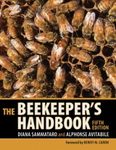About this book
Industrial Entomology is a compilation of writings focused on conventional and unconventional insect products. Some of these products are commercials successes, while others are waiting to be launched and are the potential produce of the future. In addition to the well known products honey, mulberry silk, and lac, the book primarily concentrates on silk producing insects other than the mulberry silkworm, insects as food, as sources of medicines, pest and weed managers, and as pollinators.
The book highlights the all pervasive role of insects in improving human lives at multiple levels. Accordingly, while most books on insects concentrate on how to limit growth in their population, it instead focuses on how to propagate them. In each chapter, Industrial Entomology brings to the fore how insects are far more beneficial to us than their well publicised harmful roles.
This book approaches both unconventional and conventional insect products, such as honey, silk and lac in much more depth than the available literature. It investigates different aspects of the production of these insects, such as the related processes, problems and utilities, in dedicated chapters.
Because this book deals with the production of insects or their produce, it has been named Industrial Entomology, perhaps the only book that truly reveals the tremendous potential of insects to help humans live better lives. Based on the research and working experience of the contributors, who are global experts in their respective fields, it provides authentic, authoritative and updated information on these topics.
The book offers a unique guide for students, teachers, policy planners, small scale industrialists, and government ministries of agriculture and industry across the globe. It will provide a much required stimulus to insect appreciation and generate enthusiasm for research and the broader acceptance for insect produce. Hopefully, it will also present the Indian perspective on these topics to a global readership.
Contents
Chapter 1. An Introduction to Industrial Entomology
Chapter 2. Honey Bee: Diversity, Castes and Life Cycle
Chapter 3. Beekeeping in India
Chapter 4. Diseases and Enemies of Honeybees
Chapter 5. Lac Culture
Chapter 6. Lac Insects and Host Plants
Chapter 7. Lac Crop Harvesting and Processing
Chapter 8. Mulberry Sericulture
Chapter 9. Silkworm Diseases and Pests
Chapter 10. Tropical Tasar Culture
Chapter 11. Temperate Tasar Culture
Chapter 12. Ericulture: an Ideal Avenue for Sustainable Livelihood
Chapter 13. Muga Sericulture
Chapter 14. Insect Crop Pollinators
Chapter 15. Insects as Food
Chapter 16. Entomoceuticals
Chapter 17. Mass Production of Biocontrol Agents of Insect Pests
Customer Reviews
Biography
Prof. Omkar has been actively engaged in teaching for over three decades and in research for nearly four decades. He is currently working as Professor and Head of the Department of Zoology, University of Lucknow, India. He is a Fellow of the National Academy of Sciences, India and seven more professional bodies. His contributions have gained him several distinctions: the Young Indian Zoologist of 20th Century Gold Medal from the Zoological Society of India (2000), the Prof. T N Ananthakrishnan Foundation Award from the Prof. T. N. Ananthakrishnan Foundation, Chennai (2012), the Rescholar Award of Excellence in Agricultural Entomology from the Association of Entomologists, Patiala (2014) and the Prof. G. S. Shukla Gold Medal from the Academy of Environmental Biology, India (2014). He has authored the books Concepts of Toxicology, Experimental Animal Physiology & Biochemistry, Kin Recognition and Oviposition Strategies in Aphidophagous Ladybirds, Monitoring and Management of Mango Fruit Fly, and Predaceous Ladybirds of Uttar Pradesh; and edited the books Pesticides, Man & Biosphere, Prof. S. B. Singh Commemoration Volume, Modern Approaches to Insect Pest Management, and Ecofriendly Pest Management for Food Security (Academic Press/Elsevier Inc.).
Prof. Omkar has published more than 150 research papers in international journals and 62 in Indian journals, 21 book chapters and 14 popular science articles. His research primarily concerns identifying and harnessing the potential of beneficial insects, in particular ladybird beetles, for which he is globally recognized. He has supervised 20 Ph.D. theses and completed ten research projects funded by state and central govt. agencies. He is a member of the editorial board for the Journal of Tropical Insect Science, Cambridge University Press and chief editor of the Journal of Applied Bioscience besides being President of the International Society of Applied Biology. He works as a referee for nearly 40 international and 20 prominent Indian journals, in addition to serving as a subject expert on grant applications for the Swiss National Science Foundation and other central and state govt. funding agencies. He has received prestigious travel awards from the Indian National Science Academy, New Delhi, which have allowed him to travel and collaborate with global experts on ladybird biology at the University of East Anglia, UK and the University of South Bohemia and Czech Academy of Sciences, Czech Republic


































